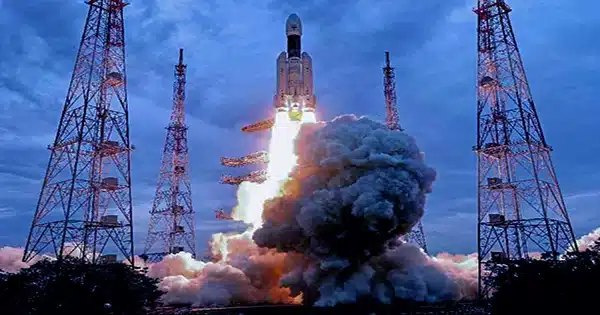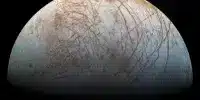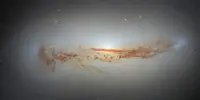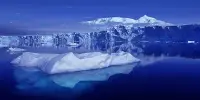The Indian Space Research Organisation (ISRO) successfully landed a spacecraft on the moon’s south pole on August 23, a spot that has long piqued scientists’ curiosity due to the peculiar conditions created by the planet’s extremes.
Chandrayaan-3, the moon rover that recently finished its 14-day mission, made history by landing on the lunar south pole. Dr. Laura McKemmish, an astrochemist at UNSW Sydney, outlines the mission’s significance and what the future of lunar exploration holds.
“This is India’s first lunar landing, and it will make India the fourth country to do so,” says Dr. McKemmish. “Our global civilization’s ability to go into space exploration is critical to enabling humanity as a global community to explore elsewhere in the universe.”
The southern pole of the moon has piqued scientists’ interest due to the presence of frozen water there, and finding water is an important aspect of Chandrayaan-3’s mission. “Identifying frozen bodies of water on the moon is a really important gateway for further space discovery in our solar system.”
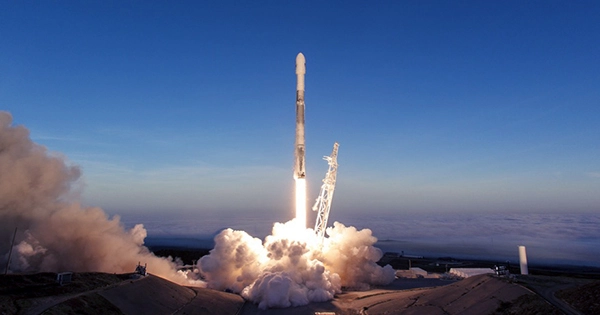
Navigating craters, darkness, and extreme temperatures: Following a failed lunar landing effort in 2019, India became the fourth country to reach this milestone, joining the United States, China, and the Soviet Union.
Chandrayaan translates to “moon vehicle” in both Hindi and Sanskrit. On July 14, the craft lifted out from a launch pad in southern India and made a ‘ soft landing’ on the moon nine days later. A soft landing occurs when the space shuttle is not damaged.
Various space agencies have attempted to land on the moon’s south pole, but it is famously difficult due to mountainous terrain, severe temperatures, a lack of light, and communication issues.
“Humans have been landing on the equator of the moon for more than a half-century,” Dr. McKemmish explains. “And, while a soft landing is always more technical, it becomes even more difficult when the landscape is more cratered, as it is at the South Pole.” Communication is also more complicated in the poles than it is at the equator.”
Chandrayaan-3 will conduct a range of experiments, including a spectrometer investigation of the lunar surface’s mineral composition.
“In general, a moon rover will dig up samples, take lots of photos, and take various spectral readings to investigate how the material interacts with light,” explains Dr. McKemmish.
“The spectroscopic technique used for this mission is essentially focusing a laser on the surface, causing the moon rocks to become plasma.” Because this plasma produces different colors of light depending on its composition, this measurement reveals a lot about the geology and history of the rock.”
This approach has already been used to measure the presence of aluminum, silicon, calcium, iron, and sulfur on the moon’s surface, as confirmed by ISRO.
Scientists will be studying data from the moon rover’s trek to seek traces of frozen water.
Making rocket fuel from water: Water ice has previously been confirmed to exist near the moon’s poles.
“Think about how much of the moon’s surface is in and out of sunlight, making the temperature range quite large,” Dr. McKemmish explains. However, water has been discovered in the shadows of craters, where temperatures never rise above -250 degrees Fahrenheit and sunlight never reaches due to the moon’s slight tilt of the rotation axis.
Initially, researchers from the University of Hawaii, Brown University, and NASA used data from an instrument aboard the ISRO’s Chandrayaan-1 mission, which was uniquely equipped to establish the presence of solid ice on the moon without landing on it.
“First, scientists looked for water by studying the surface, as water reflects light differently than other geology.” When they shone infrared light down, this was confirmed. That’s light with a lower energy than visible light, and water absorbs it at a specific frequency.”
Water not only sustains life and might be used by astronauts stationed permanently on the moon, but it also serves additional purposes.
“Water can be broken down into hydrogen and oxygen,” Dr. McKemmish explains. “Aside from allowing us to breathe, oxygen can help humans in a variety of other ways.” Oxygen and hydrogen, in particular, are a fuel that can power spacecraft created from moon material to journeys to distant parts of the solar system.”
The utilization of moon-based material and fuel is crucial since lifting anything from Earth’s gravitational pull into space is extremely expensive due to the large amount of energy required.
“Anything you can create or find on a much lower gravity planet like the moon means it’s much cheaper, which could make it far easier to pursue a human mission to Mars.”
“This work is geared toward establishing a permanent base on the moon, similar to how there is a permanent human presence on the International Space Station.” It’s about moving toward building spacecraft in orbit because doing things in space is more cheaper.”
Lessons from Chandrayaan-3: While this trip was momentous in its own right, it also served as a springboard for subsequent exploration.
Dr. McKemmish argues that examining the moon’s south pole is like exploring a new section of the planet’s surface. “When you think about it, Antarctica is nothing like the middle of the Australian desert, which is nothing like the Amazon rainforest.”
“And, obviously, some of this variation is caused by life.” But even without life, there is a lot of variability on Earth, which tells us a lot about its history.”
Dr. McKemmish highlights that the moon’s surface is not uniform. “Understanding the diversity of the moon’s different environments is fascinating scientifically, but it is also important economically.” Aside from the critical presence of water in the south pole regions, we’d like to know if there are any metal-rich locations near these water deposits. This is an ideal location for a future moon base.”
Importantly, it tells a story in which space is not dominated by a few countries, but rather invites a wider global community to explore space. The ISRO has already launched a rocket to examine solar weather patterns since the Chandrayaan-3 spacecraft mission.
“Australia is a relatively small country in the world, and we thought it was important enough to establish a space agency,” explains Dr. McKemmish. “In fact, the Australian Space Agency plans to launch a moon rover as early as 2026 on the Artemis mission.” You can even try your hand at naming the spaceship.”
